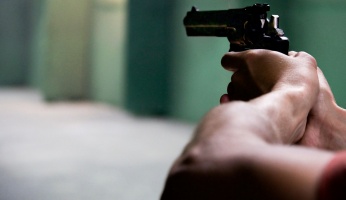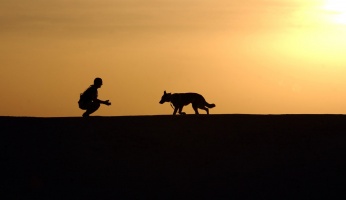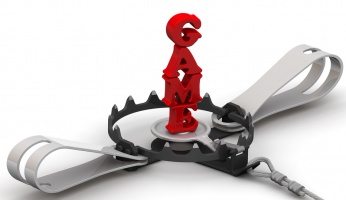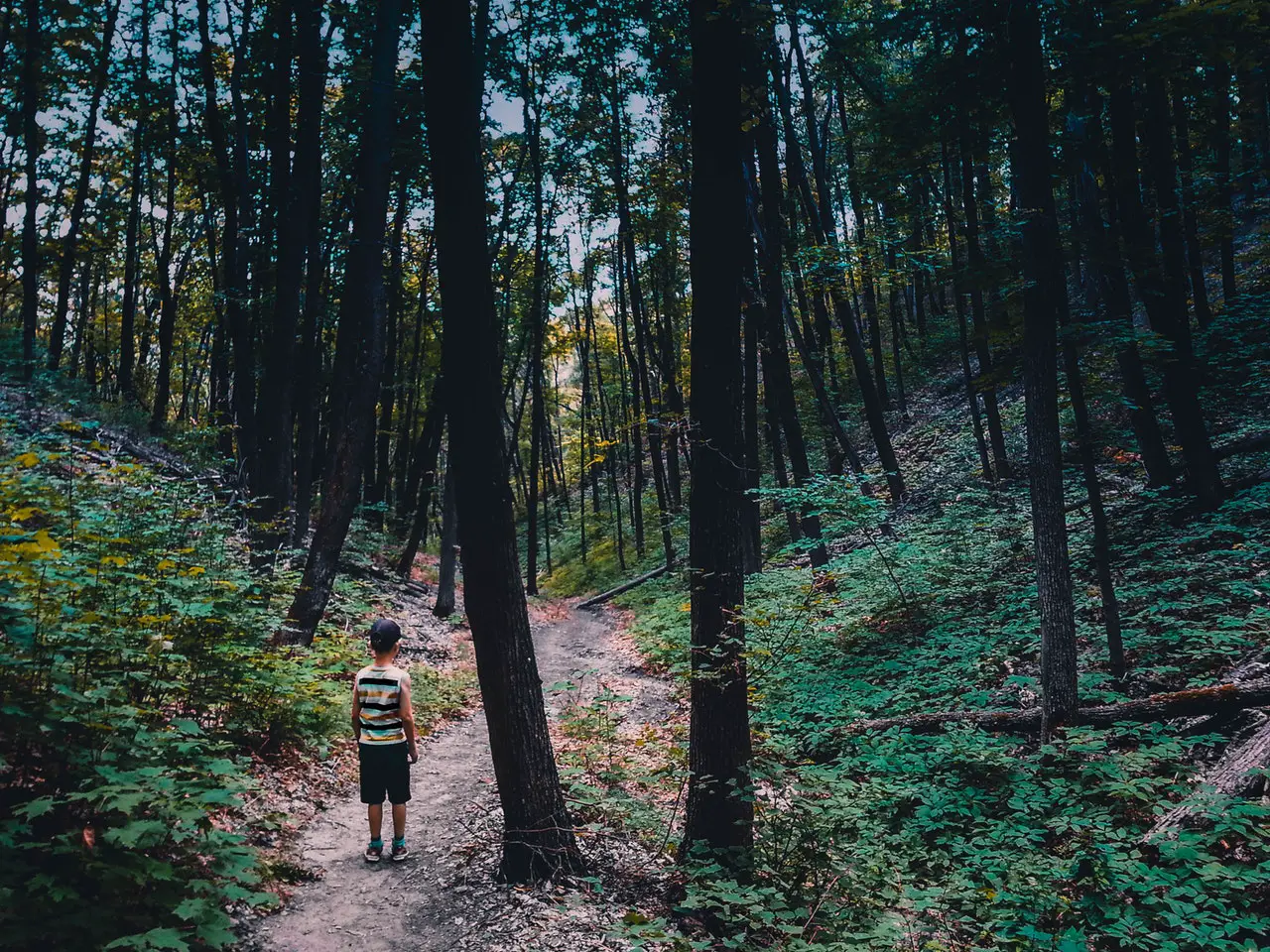Deer Hunting with Dogs: Everything You Should Know
 Deer Hunting with Dogs: Everything You Should Know
thegearhunt.com
Deer Hunting with Dogs: Everything You Should Know
thegearhunt.com
Hunting for deer with dogs is a sport that is adventurous. If you have ever hunted for deer without dogs, you might be surprised to find that many people have better luck when they use dogs. Things can be rather boring because you can stand in a single spot for hours without any guarantee that a deer will come by.
Hunting with a dog is a lot more fun. You just need to follow the trail your dog chooses until you are in a position to shoot. You might even just allow your hound to run the deer right past your stand, so you can take a shot. However, you will need a hound that is up to this in order for it to work.
Training a Hunting Dog
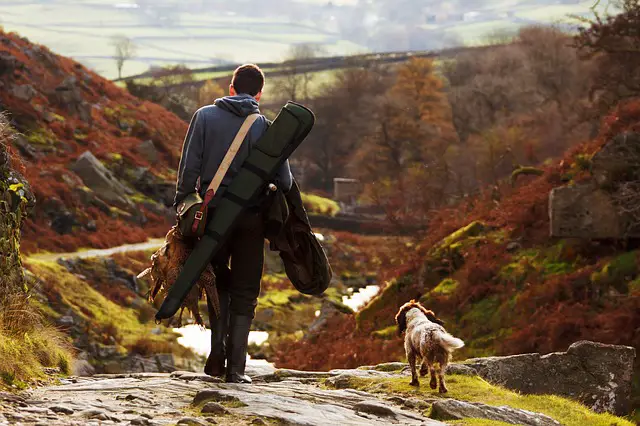 You need to use dog training techniques that are real if you want to have real results. The ideal hound can be one that you train to indicate deer.
You need to use dog training techniques that are real if you want to have real results. The ideal hound can be one that you train to indicate deer.
This type of hound will be able to track the deer through either a ground scent or a scent on the wind. He needs to be trained to walk at a slow and quiet pace right ahead of you. He should also be trained to stop once he has found the deer so that you will be able to take the shot.
You need to be sure that your dog remains sitting close in front of you. The dog should have the ability to monitor and remain on track without you needing to constantly give it commands. When you start training a dog for hunting, you will need to teach the animal to walk slowly and comfortably in front of you. Don’t worry about heel work right now. The animal will feel pressured if you do and it will not be able to do as expected if it needs to drop back and heel.
If you want to train a dog for hunting, it is always best to start with a dog when it is only about 10 weeks of age. Puppies will adapt to walking ahead of you much easier than older dogs will. You want to get it to where it will go on command if it stops walking. Try to walk one way with the dog and then make sure to put it back on track whenever it wanders away. Get a sort of range in place that the dog will remain inside and begin to monitor itself.
Training can be simpler if you walk your dog while he is leashed. Next up is to teach the animal is how to range. This is critical due to the fact that the animal will need to know when it is time to stop. This can be done either by using a long leash or with the use of a shock collar. Allow it to move quite a bit ahead of you before making the creature stop. This trick will assist the dog in pacing himself and to monitor his range.
Any time that the dog is pulling too far from you is because that is the direction he wants to go in. This means that you will need to let the dog know that 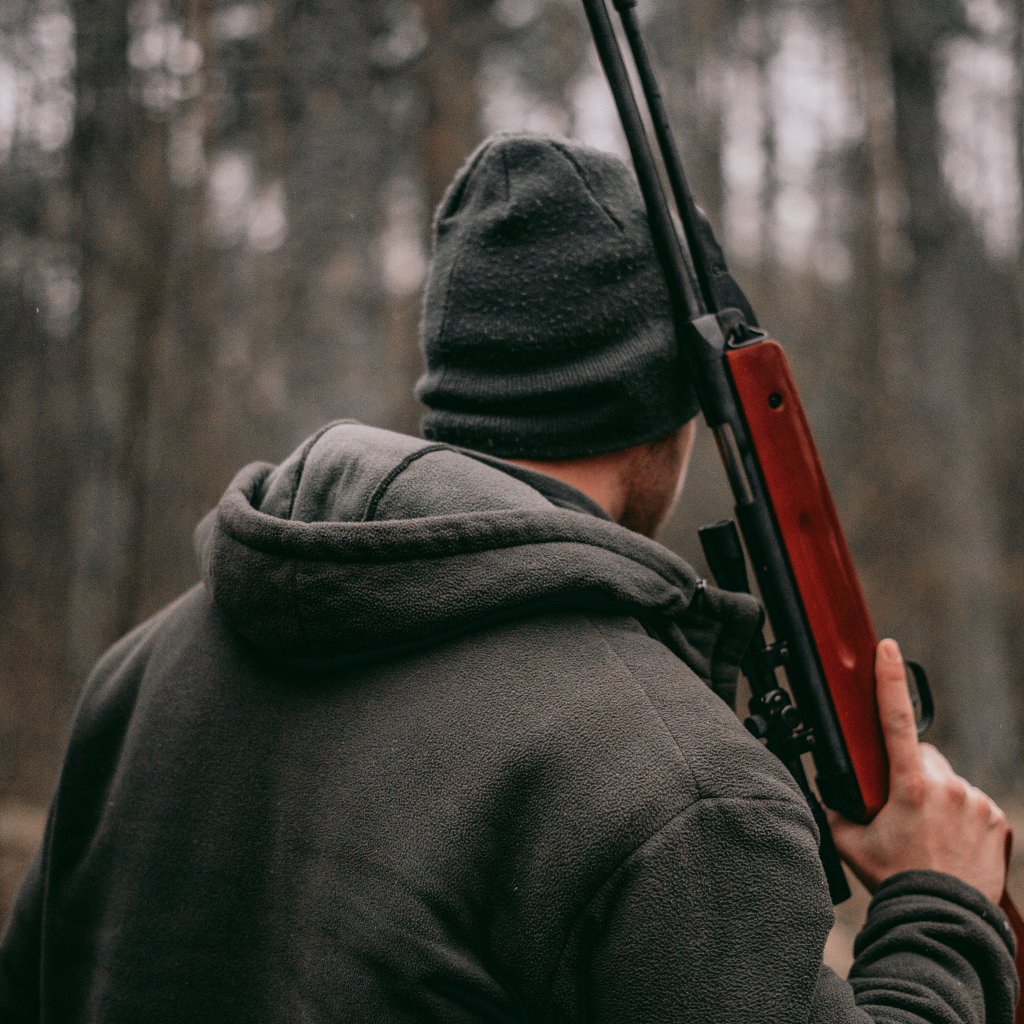 you aren’t going that way and will need to either pull on the leash or shock it with the collar to get him back on track. This will need to be done for a bit before you will be able to take the collar and/or leash off. These techniques will assist your dog when it comes to being attentive and staying within range while you are out on the trail.
you aren’t going that way and will need to either pull on the leash or shock it with the collar to get him back on track. This will need to be done for a bit before you will be able to take the collar and/or leash off. These techniques will assist your dog when it comes to being attentive and staying within range while you are out on the trail.
Be sure that your dog is healthy if you want to take him on a deer hunting trip. You will need to feed him a healthy diet. Choose the type of deer you want the dog to be able to track – either one who is running or one who is wounded. Introduce the dog to the smell of a deer hide if you want him to be able to track one that is running. If you want him to track wounded deer, get him used to the smell of deer blood. Either dot the deer blood or drag a deer hide across your training field and then out of sight before releasing the dog so that he will be able to track the scent or the hide or blood.
Good Breeds for Hunting Deer
German Shorthaired Pointer
This dog originated in Germany. In the early days of the breed, it was used to hunt feathered game. This breed is considered to have a noble appearance and to be well-balanced. These traits will give you strength, endurance, and speed. The breed is known as quite a versatile hunting dog who is adept and will give you a good performance whether it is in the water or on land.
The breed is a boisterous one that has traits such as: affectionate, intelligent, cooperative, bold, and trainable. They have high levels of energy that can be useful when training or during a hunt. This creature seems to enjoy learning new things through consistency and repetition. This is an athletic breed that requires quite a bit of exercise. This is one of very few hunting dogs that are actually able to execute each of the roles of the gun dog.
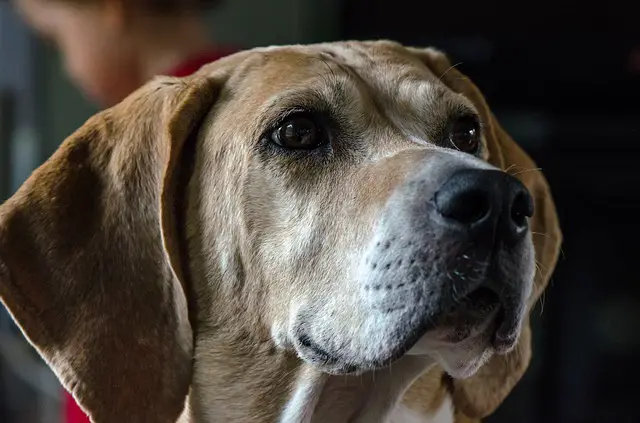 American Foxhound
American Foxhound
I bet you can tell from the breed name that this breed originated in the US. It is one of the smaller breeds, but it has very keen sense of smell. Originally, this creature was used to hunt foxes, but they can hunt animals of all kinds. The coat of the American foxhound is rough, and this keeps the animal safe from sticks and branches while it is hunting. It can be quite a few different colors. However, the most commonly seen combination is black, with, and tan.
This dog is independent, stubborn, aggressive, and bold. Training one to hunt can be a challenge because the animal is keen to just take off and hunt. This means that you will need to begin training while they are still very young. Even though this breed is known for being sociable and loving, it has never been used as a domesticated house dog too much. This animal will require a minimum of 2 hours of training each day. They shed only a little, so you only need to brush them infrequently.
Bloodhound
This breed originated in the UK and Belgium. It is a larger breed that is capable of tracking scents for quite a few days over distances that can be quite large. The formidability of this dog is because it can track scents in the air instead of just being stuck with his nose on the ground. Their sense of smell is incredible and this means that they have been used for quite a few things aside from hunting for animals. They have even been used as cadaver dogs and rescue dogs in certain natural disasters.
This dog is one that is gentle, patient, noble, and mild-mannered. It is known for being independent and determined. It tends to make its own decision, specifically when it finds an interesting scent. To that end, when it comes to following a new trail, the animal can be determined and single-minded. You might need to learn a few pro skills when it comes to training this breed. Typically, this breed can be a fantastic one when it comes to hunting deer.
Weimaraner
This is another of the German breeds. This one tends to be muscular and lean. They are quite adept at hunting a many different types of animals that includes deer, but they also make great pets. This is a good-looking dog with a coat of silver gray. It is quite intelligent but doesn’t do well when they are left alone for long periods of time. It is intelligent enough to give you good success when you take it hunting.
This is a lively breed that is quite athletic. It is also a breed that can be demanding when it comes to needing strong leadership and it requires a lot of physical activity. It is quite versatile and can be used both for tracking and retrieving game. This is one of those dogs that will chase anything that moves. This means that you will need to keep it on a leash. They can be difficult to train due to their being stubborn and mischievous. They are known for simply walking away when an activity doesn’t interest them.
Basset Hound
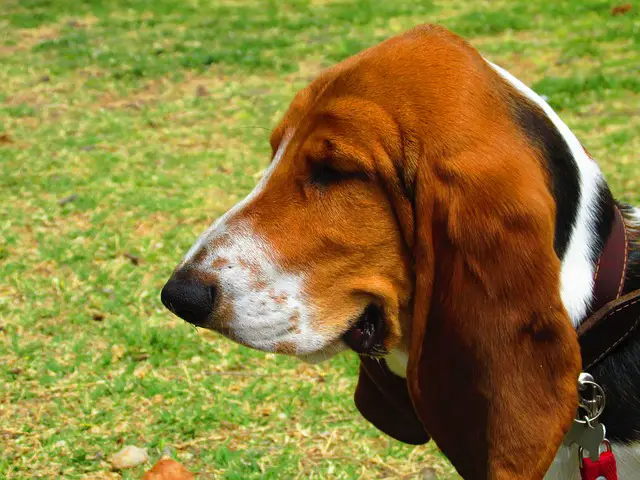 This breed comes from France and Great Britain. It is a hunting dog that has short legs and a sense of smell that is akin to that of the bloodhound discussed earlier. It doesn’t have any trouble when it comes to effectively trailing a scent. However, it can become obsessed with scents to the point where it will ignore you when you command it to heel. This breed was engineered to pick up scents. It has long droopy ears that nearly touch the ground, and the breed is known for its mournful vocalizations.
This breed comes from France and Great Britain. It is a hunting dog that has short legs and a sense of smell that is akin to that of the bloodhound discussed earlier. It doesn’t have any trouble when it comes to effectively trailing a scent. However, it can become obsessed with scents to the point where it will ignore you when you command it to heel. This breed was engineered to pick up scents. It has long droopy ears that nearly touch the ground, and the breed is known for its mournful vocalizations.
As far as personality goes, this breed is inconsistent. It will display a certain sad-eyed look that can make it difficult to discern whether it is being stubborn and independent. This breed can actually be the best at hunting, but you will need to consistently train and discipline it. Typically, it is a dog that is good-natured, lovable, and easier going than some of the other hunting breeds. The hounding instinct of this animal makes it a bit challenging to train, but they are able to scent a deer from a long distance due to their excellent sense of smell.
Tips for Deer Hunting with Dogs
The dog needs to be trained well. The partnership that you will have with a dog who is well trained will be unlike any other relationship with any other dog. Yes, you will need to spend quite a bit of time training it, but the results will leave you astounded. Deer tend to prefer thickets, but can spread across acres, and this can leave you at a disadvantage if you don’t have a dog that is properly trained.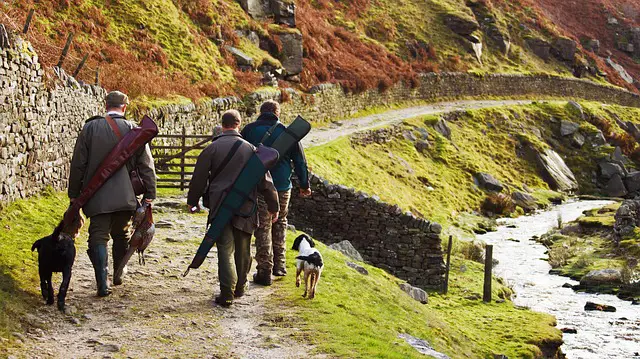
Legality. Hunting for deer with dogs can be an exciting adventure. However, this isn’t legal in all 50 states. You may end up having to pay a large fine if you are caught using a dog to hunt in a state where it is prohibited. You can avoid this by checking the regulations in the state where you will be hunting.
Keep in mind that hunting with dogs is only a sport. Don’t punish or take it out on your dog in any way if you don’t end up bagging any game. Instead, just enjoy yourself and having your pet along while you are in the field.
Get a dog that is of a breed that is known for their sense of smell. You will find that your success with deer hunting and your dog will depend on their sense of smell. Because of this, it would be wise for you to train hounds with a good sense of smell. That said, the best of the scent hounds can also be difficult to train due to them having a tendency to follow their nose as opposed to heeling when commanded. Even so, they are your best option when it comes to successfully hunting for deer.
Use a tracking collar and an electric collar when hunting. The electric collar will be used to remind the animal of your commands when they get lost in the scent on a trail. Tracking collars are good in case the dog gets too far ahead of where you are, and you can’t find them.
Conclusion
Hunting for deer with dogs can be more practical in certain geographical situations. If you don’t have any experience with hunting in thickets and instead, will wait for hours for a deer to show up, you more than likely won’t be able to fully appreciate all of the benefits of having hunting dogs do all of the trailing and running through those thickets. If you want your hunting trips to be both more successful and more of an adventure, a hunting dog will be your best bet.
Sources
- YouTube, Train Your Dog to Track Deer
- Outdoor Channel, When all Else Fails, go Deer Hunting with Dogs
- Udemy, Hunting Dog Training and the Best Dog Breeds for Hunting
- Wag Walking, How to Train Your Dog to Hunt Deer





